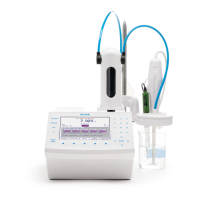Reduction-Oxidation Reaction (redox)
A chemical reaction in which the atoms involved in the reaction have their oxidation numbers changed. Reduction is the gain of
electrons, which decreases the oxidation number. Oxidation is the loss of electrons, which increases the oxidation number.
Reductants
The electron donor in a redox reaction.
Reference Electrode
An electrode that supplies a constant electrode potential. It is used in combination with an “indicator” electrode, allowing for the
“indicator” electrode potential to be measured.
Relative Standard Deviation (RSD)
A measure of the amount of relative variation in a set of data. It is calculated by dividing the standard deviation by the mean:
RSD = (Standard Deviation of X) * 100 / (Mean of X)
Repeatability
The variation in sample measurements taken by a single person or instrument under the same conditions.
Spectrophotometric Titration
A titration in which the endpoint is marked by a change in the color and/or color intensity.
Stoichiometry
The quantitative relationship of the reactants and products in a chemical reaction.
Titrant
The chemical added in a titration that causes the given reaction to occur.
Titration
A quantitative, volumetric procedure used in analytical chemistry to determine the concentration of an analyte in solution. The
concentration of the analyte is determined by slowly adding a titrant to the solution. As the titrant is added, a chemical reaction
between the titrant and the analyte occurs.
Titration Curve
A graph containing the physical data obtained for a titration. The data plotted is often an independent variable (volume of
titrant) vs. a dependent variable (pH of the solution). From the titration curve, the equivalence point or endpoint can be
determined.

